Welcome to our exploration of a vital aspect of modern agriculture: sustainable pest control. In the intricate dance between humans and nature, pest management plays a pivotal role in ensuring bountiful harvests and nourishing meals on our tables. However, the conventional methods of pest control have often come at a steep cost to our environment and ecosystem health. This is where the concept of sustainable pest control steps in – a harmonious approach that seeks to strike a balance between safeguarding our crops and preserving the delicate equilibrium of our planet.
In this article, we’ll delve into the captivating world of agronomic insights that are revolutionizing the way we think about pest control. We’ll journey through the challenges posed by conventional pesticide-heavy practices and explore the benefits of embracing sustainability. Through the lens of integrated pest management, cultural practices, biological control, biopesticides, and cutting-edge technologies, we’ll uncover a holistic array of solutions that not only mitigate pest pressures but also nurture the intricate web of life that sustains our fields.
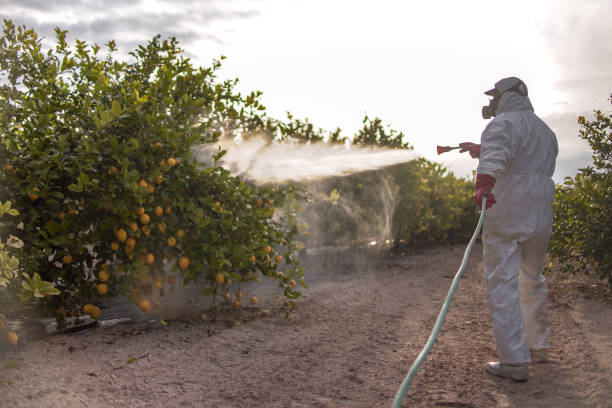
As we embark on this journey, remember that sustainable pest control is not just a buzzword – it’s a call to action. It’s a reminder that our decisions as farmers, consumers, and caretakers of the land have a profound impact on the health of our ecosystems and the quality of our food. So, let’s roll up our sleeves and venture into the world of sustainable pest control, where innovation and nature’s wisdom intertwine to shape the future of agriculture.
The Challenges of Conventional Pest Control:
Picture a traditional farm scene – rows of vibrant crops stretching towards the horizon, bathed in sunlight. But lurking beneath this idyllic facade lies a challenge that has long plagued agriculture: pests. In the battle against these unwelcome guests, conventional pest control methods have often been the go-to solution. However, beneath the surface, there’s a hidden cost to these practices that we can no longer ignore.
For decades, chemical pesticides have been the weapon of choice against pests. These potent substances promise swift elimination, protecting our crops from destruction. Yet, in our eagerness to secure our harvests, we’ve unintentionally triggered a chain reaction that reverberates through our ecosystem.
The problem lies in the indiscriminate nature of chemical pesticides. As they target pests, they also cast a wide net over beneficial insects, soil microorganisms, and aquatic life. The aftermath of a pesticide application extends beyond the intended victims, disrupting delicate ecosystems that have evolved over millennia.
Moreover, the overuse of pesticides has led to a concerning phenomenon – pesticide resistance. Pests, much like any other living beings, can adapt to their environment. Over time, repeated exposure to the same chemicals has led to the development of pesticide-resistant strains, rendering our once-effective tools useless.
While conventional pest control methods have provided short-term relief, their long-term consequences are becoming increasingly evident. The health of our soil, the purity of our water sources, and the vitality of our ecosystems are all at stake. It’s clear that a paradigm shift is not only necessary but essential.
As we journey through this exploration of sustainable pest control, keep in mind the challenges posed by conventional practices. Our quest for solutions will lead us to greener, more harmonious alternatives that embrace the complexity of nature rather than attempt to dominate it.
Benefits of Sustainable Pest Control:
Amidst the sun-dappled fields and the intricate tapestry of nature, a new approach to pest control is emerging – one that not only protects our crops but also nurtures the delicate balance of our environment. Welcome to the realm of sustainable pest control, where the benefits extend far beyond a bountiful harvest. Let’s embark on a journey to discover the myriad advantages that this harmonious approach brings to modern agriculture.
At the heart of sustainable pest control lies a profound shift in perspective. Instead of treating pests as foes to be vanquished at any cost, this approach recognizes them as integral parts of a larger ecosystem. By fostering biodiversity and minimizing the use of chemicals, we invite a host of benefits that ripple through our fields and beyond.
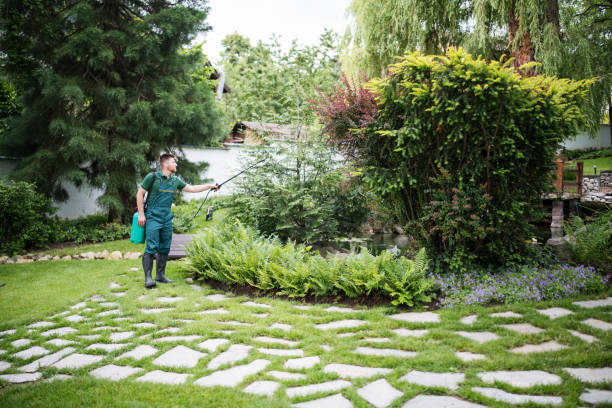
One of the remarkable benefits of sustainable pest control is its ability to safeguard beneficial insects and natural predators. Unlike chemical pesticides that show no mercy, sustainable practices create a haven for ladybugs, lacewings, and other friendly helpers that keep pest populations in check.
Beyond the fields, the advantages of sustainability seep into the very fabric of our environment. Reduced chemical use translates to cleaner water sources and healthier soil. The ecosystems surrounding our farms benefit from this lighter ecological footprint, fostering a chain reaction of positive change.
But perhaps one of the most promising aspects of sustainable pest control is its long-term viability. By eschewing the cycle of pesticide dependence, farmers can break the pattern of pesticide resistance and pave the way for effective, lasting pest management solutions.
As we journey through the world of sustainable pest control, keep these benefits in mind. It’s not just about better yields – it’s about nurturing the land, preserving biodiversity, and forging a path to agricultural practices that respect the delicate balance of nature.
Integrated Pest Management (IPM): Balancing Nature and Necessity:
In the ever-evolving landscape of agriculture, a holistic approach to pest management has gained prominence – Integrated Pest Management (IPM). This innovative strategy represents a harmonious marriage of ecological principles and practical solutions, offering a nuanced and sustainable way to safeguard our crops while minimizing environmental impact. Let’s delve into the intricacies of IPM and uncover how it’s reshaping the way we interact with pests.
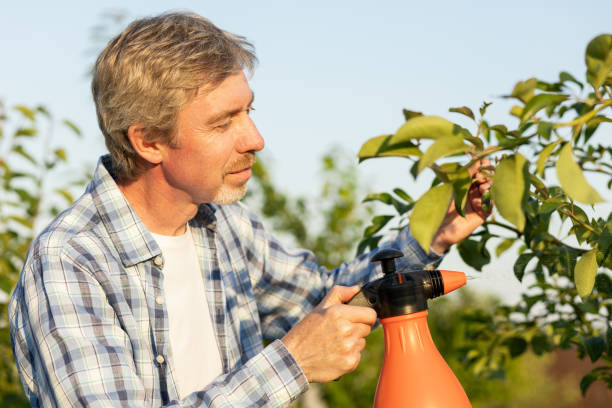
Understanding IPM:
At its core, Integrated Pest Management is a comprehensive framework that aims to prevent, manage, and mitigate pest pressures using a multifaceted approach. Unlike the singular focus of conventional methods, IPM draws inspiration from nature itself, recognizing that pests are part of a complex web of interactions within ecosystems.
The Components of IPM:
IPM employs a range of strategies that collectively create a robust defense against pests, tailored to each specific situation. These components include:
Monitoring and Identification:
Understanding the pest’s life cycle, behavior, and population dynamics is crucial. Regular monitoring allows for timely intervention when necessary.
Prevention:
Creating an environment that is less favorable to pests reduces the chances of infestations. This might involve selecting pest-resistant crop varieties, practicing proper sanitation, and employing physical barriers.
Cultural Practices:
Crop rotation, intercropping, and diversifying planting schemes disrupt pest life cycles and promote a balanced ecosystem.
Biological Control:
Harnessing the power of nature, IPM encourages the use of natural predators, parasites, and pathogens to regulate pest populations.
Minimal Pesticide Use:
If needed, pesticides are used judiciously and as a last resort, prioritizing low-toxicity options that have minimal impact on non-target organisms.
Benefits of IPM:
The advantages of adopting IPM are manifold. Firstly, it reduces the reliance on chemical pesticides, which helps preserve soil health, maintain water quality, and protect beneficial insects. Secondly, by promoting natural pest predators, IPM minimizes disruptions to the ecosystem, fostering a delicate balance that sustains itself.
Sustainability and Resilience:
IPM isn’t just a strategy – it’s a philosophy that aligns with the long-term sustainability of agriculture. By reducing the environmental footprint of pest control measures and promoting natural checks and balances, IPM contributes to the resilience of our farming systems in the face of changing climates and evolving pest pressures.
A Call for Collaboration:
Implementing IPM requires collaboration among farmers, researchers, and communities. Knowledge sharing and localized adaptations are essential for tailoring IPM practices to specific regions, crops, and challenges.
In conclusion, Integrated Pest Management signifies a paradigm shift in how we approach pest control. It’s a step towards a more holistic and balanced relationship with the land. By embracing the principles of IPM, we not only protect our crops but also nurture the intricate tapestry of life that sustains our world.
Cultural Practices for Pest Management:
Nurturing Crops, Nixing Pests Naturally:
In the enchanting dance between humans and nature, agriculture occupies center stage. But in this delicate choreography, uninvited guests often emerge – pests. Instead of relying solely on chemical solutions, cultural practices step in as a graceful and sustainable way to keep these intruders at bay. Join us as we explore the art of pest management through time-honored techniques that work with nature, not against it.
Crop Rotation: A Symphony of Change:
Imagine a theater where crops take center stage, rotating with each act. Crop rotation is a foundational cultural practice that involves planting different crops in successive seasons on the same piece of land. This technique disrupts the life cycles of pests that are specific to certain crops, reducing their population and reliance on pesticides.
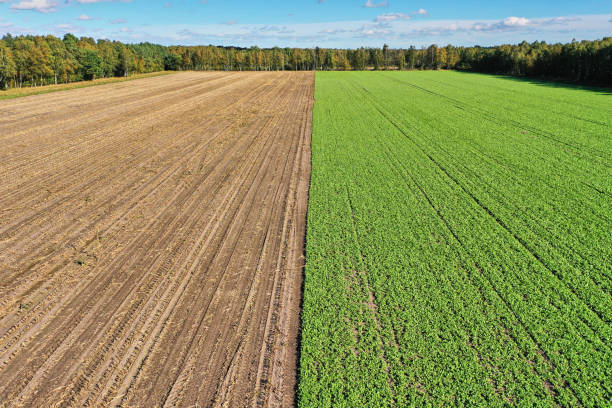
Intercropping: Nature’s Mixtape:
Intercropping is like blending different musical notes to create a harmonious melody. By planting different crops in close proximity, pests find it harder to locate their favorite meal. This natural confusion leaves them disoriented, reducing the likelihood of massive infestations.
Companion Planting: Friends in High Places:
In the garden of pest management, some plants make better companions than others. Companion planting involves strategically placing pest-repelling plants alongside vulnerable crops. For instance, marigolds emit chemicals that repel pests, serving as natural bodyguards for neighboring plants.
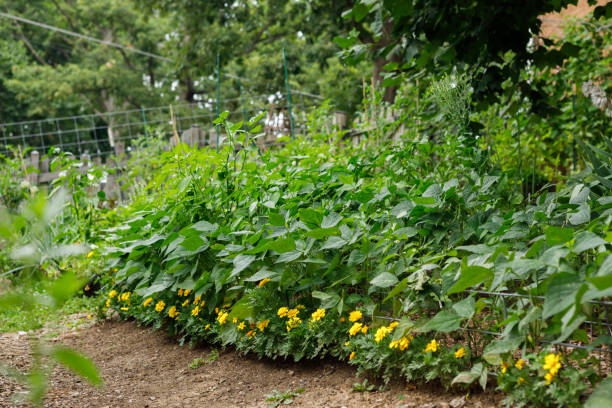
Mulching: Nature’s Blanket:
Picture a cozy blanket on a cold night – that’s what mulching is for your plants. Mulch covers the soil around crops, serving as a protective layer that prevents weed growth and hinders pest movement. Plus, it conserves moisture, creating an environment that’s less hospitable to pests.
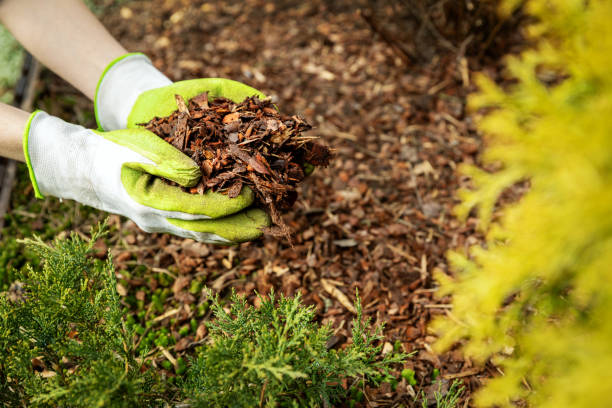
The Symphony Continues:
As we embrace these cultural practices, we’re composing a symphony that resonates with nature’s rhythms. By integrating these techniques into our agricultural repertoire, we harmonize with the environment, nurturing our crops while diminishing the need for chemical interventions. Through the art of cultural practices, we’re not just tending to our fields – we’re cultivating a sustainable and harmonious future.
Biological Control Methods:
Nature’s Allies in Pest Warfare:
In the intricate world of agriculture, where every leaf and stem plays a role, there’s an age-old secret to pest management that nature has been whispering to us all along. Biological control methods – the allies hidden in plain sight – offer an eco-friendly and sustainable way to keep pests at bay. Join us as we uncover the wonders of nature’s own pest control squad and explore how they’re transforming the way we protect our crops.
Beneficial Insects: Tiny Avengers of the Garden:
Meet the superheroes of the insect world – beneficial insects. Ladybugs, lacewings, and parasitoid wasps, to name a few, are natural predators that feast on pests that threaten our crops. They’re the garden’s tiny avengers, swooping in to maintain a delicate balance and ensure pest populations don’t spiral out of control.
Nematodes: Beneath the Surface Warriors:
While they might be microscopic, nematodes are formidable warriors against soil-dwelling pests. These tiny roundworms penetrate pests’ bodies, releasing bacteria that break them down from the inside. It’s like a covert mission beneath the soil, with nematodes as the heroes safeguarding the roots.
Microbial Biopesticides: Nature’s Elixir:
Nature has its own arsenal of biopesticides – beneficial microbes that act as natural deterrents. These microbial warriors, like Bacillus thuringiensis (Bt), release toxins lethal to specific pests, ensuring that only the intended targets are affected. It’s precision pest control straight from Mother Nature.
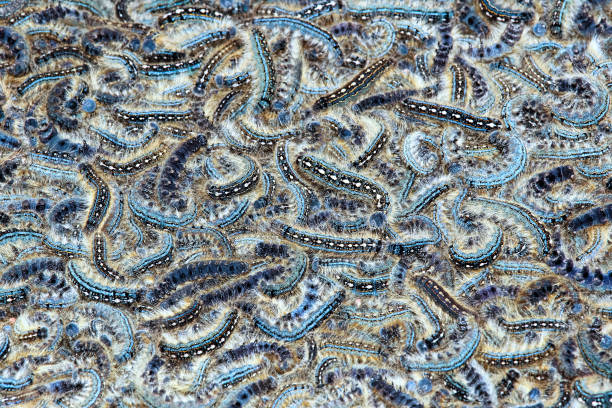
Conservation of Natural Enemies: Habitat Heroes:
Creating a haven for our beneficial allies is crucial. By maintaining diverse habitats, such as wildflower patches and hedgerows, we invite these natural enemies to set up residence. Their presence ensures that pests remain in check, allowing our crops to flourish without the need for excessive chemical interventions.
Nature’s Collaborators:
As we tap into nature’s intricate network of biological allies, we’re entering a realm where harmony trumps hostility. By embracing biological control methods, we’re co-creating a healthier and more sustainable agricultural landscape. These allies are not just insects or microbes – they’re the collaborators that remind us that working with nature is the ultimate path to pest management success.
Biopesticides:
A Safer Alternative for Pest Management:
In the world of agriculture, the quest for effective pest management has led us down a new and promising path – the realm of biopesticides. These eco-friendly alternatives offer a safer way to tackle pests without the ecological baggage of traditional chemical solutions. Join us as we explore the wonders of biopesticides and how they’re revolutionizing the way we protect our crops and environment.
Microbial Biopesticides: Tiny Warriors in a Drop:
Imagine harnessing the power of tiny warriors to fight pest battles. Microbial biopesticides do just that. They’re formulated from naturally occurring bacteria, fungi, or viruses that are deadly to pests. When applied, these microscopic warriors target pests while leaving beneficial organisms and the environment unharmed.
Botanical Biopesticides: Nature’s Arsenal Unleashed:
Nature has its own pharmacy of potent pest-fighting compounds. Botanical biopesticides extract these powerful substances from plants like neem, pyrethrum, and garlic. When sprayed on crops, they disrupt pests’ nervous systems or repel them, offering a green alternative to chemical pesticides.

Biochemical Biopesticides: Disrupting Pests’ Chemistry:
Biochemical biopesticides take a different approach, targeting pests’ physiological processes. These substances, often similar to compounds naturally present in plants or insects, interfere with pests’ growth, development, or reproduction. They offer a subtle yet effective way to control pests without harming the ecosystem.
Precision and Sustainability: The Biopesticide Promise
What sets biopesticides apart is their precision. They target specific pests while leaving beneficial organisms untouched. This precision minimizes the collateral damage associated with broad-spectrum chemical pesticides, making them an environmentally friendly and sustainable choice for modern agriculture.
Nature’s Gift to Agriculture:
As we embrace the world of biopesticides, we’re opening a door to a future where pest management is not a battle against nature, but a collaboration with it. These alternatives offer effective solutions while respecting the delicate balance of our ecosystems. Through biopesticides, we’re uncovering nature’s gift to agriculture – a path toward productivity, sustainability, and harmony.
Modern Technologies in Sustainable Pest Control:
Pioneering a Greener Tomorrow:
In the dynamic landscape of agriculture, where innovation meets necessity, modern technologies have emerged as powerful allies in the pursuit of sustainable pest control. These cutting-edge tools not only revolutionize the way we manage pests but also pave the way for a greener and more harmonious future. Join us as we embark on a journey through the realm of technology-driven pest management and explore how it’s reshaping the agricultural horizon.
Drones: Precision from Above
Imagine a fleet of drones soaring above the fields, each carrying out a unique mission – this is the reality of modern pest control. Drones equipped with advanced imaging and spraying systems can precisely target pest-infested areas, reducing the need for blanket pesticide applications and minimizing chemical usage.
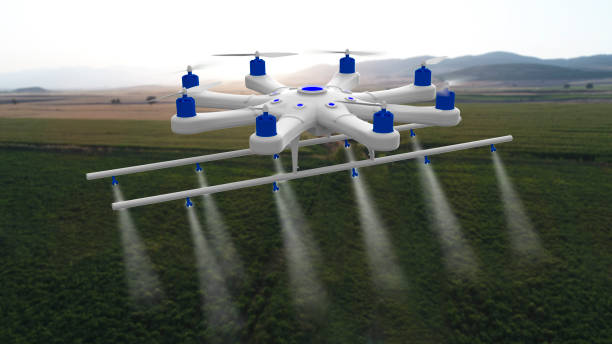
Remote Sensing: Eyes on the Fields
In the age of satellites and sensors, remote sensing takes center stage. By capturing data on crop health, temperature, and pest infestations from above, this technology enables farmers to make informed decisions. With real-time insights, interventions are timely and precise, minimizing pest damage.
Predictive Modeling: Seeing into the Future
Imagine having a crystal ball that predicts pest outbreaks before they happen. Predictive modeling harnesses data from various sources to anticipate pest pressures. By identifying patterns and trends, farmers can proactively implement strategies, reducing the risk of infestations and minimizing the need for reactive measures.
Data-Driven Decision-Making: Empowering Farmers
In the era of big data, information is power. Data-driven decision-making empowers farmers to fine-tune their pest management strategies. By analyzing historical and real-time data, farmers can optimize interventions, respond to changing conditions, and minimize the ecological footprint of their pest control practices.
A New Frontier in Agriculture:
As we embrace these modern technologies, we’re venturing into uncharted territory – a realm where data, precision, and sustainability converge. Through drones, remote sensing, predictive modeling, and data-driven decision-making, we’re not only managing pests; we’re cultivating a future where agriculture thrives in harmony with nature. These technologies are not just tools; they’re the architects of a greener tomorrow.
Community and Farmer Involvement:
Cultivating Collaborative Pest Management:
In the sprawling tapestry of agriculture, the role of community and farmers goes beyond planting and harvesting. When it comes to sustainable pest management, the collective effort of these stewards of the land plays a pivotal role in nurturing a thriving ecosystem. Let’s delve into the power of collaboration, understanding how community and farmer involvement are sowing the seeds for effective and harmonious pest control.
Knowledge Sharing: A Bounty of Wisdom
In the agricultural community, knowledge is akin to a bountiful harvest. Farmers bring years of experience and insights to the table, and sharing this wisdom is key to effective pest management. Community gatherings, workshops, and digital platforms become avenues for the exchange of information, enabling farmers to learn from one another’s successes and challenges.

Local Adaptation: Tailoring Solutions to the Land
Every piece of land is unique, with its own set of challenges and blessings. Community involvement allows for localized solutions that are in tune with the environment. By recognizing the nuances of different regions, farmers can adapt pest management practices to fit their specific landscapes, fostering a holistic approach that aligns with nature.
Integrated Efforts: Collaborative Pest Watch
When a community comes together, pest surveillance becomes a collective endeavor. By monitoring pest populations and sharing observations, farmers contribute to a shared pool of data. This data helps identify pest trends and potential outbreaks early, allowing for timely interventions that minimize the spread of pests.
Advocacy and Outreach: Amplifying Impact
Community and farmer involvement extends beyond the fields. Through advocacy and outreach, they become champions of sustainable pest management practices. By sharing success stories and the benefits of eco-friendly approaches, they inspire others to embrace these methods, creating a ripple effect that reaches far beyond their own farms.
Cultivating Harmony:
As we delve into the realm of community and farmer involvement, we’re sowing the seeds of a holistic approach to pest management. By sharing knowledge, adapting solutions, collaborating on pest surveillance, and advocating for sustainable practices, we’re nurturing a harmony that extends from the fields to the wider agricultural community. Together, we cultivate not only crops but a future where the land thrives in balance and abundance.
Challenges and Future Outlook:
Navigating the Path to Sustainable Pest Control:
In the ever-evolving landscape of agriculture, the journey toward sustainable pest control is not without its challenges. As we seek to harmonize productivity with ecological balance, a complex interplay of factors comes into play. Join us as we unravel the challenges that lie ahead and cast our gaze toward the promising future of pest management that treads lightly on the planet.
Pesticide Resistance: A Battle of Adaptation
One of the prominent challenges is the emergence of pesticide resistance in pests. As pests adapt to chemical treatments, their effectiveness wanes, leading to a cycle of increased pesticide usage. Breaking this cycle requires innovative solutions that focus on integrated approaches, emphasizing biological control, cultural practices, and targeted chemical use.
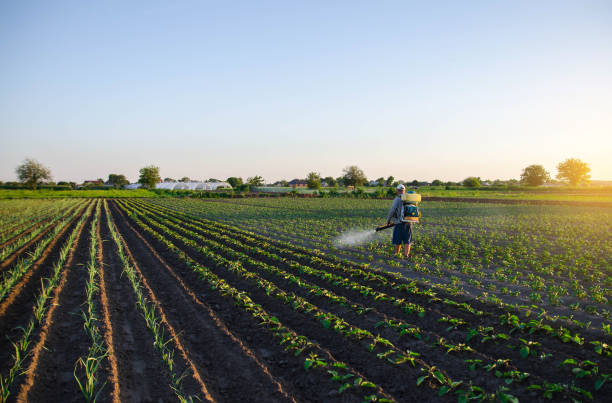
Climate Change: Shifting Landscapes
The changing climate brings about shifts in pest dynamics. Warmer temperatures and altered precipitation patterns can create favorable conditions for pests to thrive. Adapting to these changes demands a holistic approach that considers pest behavior, crop choices, and sustainable practices that mitigate the impacts of a changing climate.

Balancing Act: Ecological Harmony
The challenge lies in striking the delicate balance between pest management and ecological preservation. While pest control is necessary for productivity, overreliance on certain methods can disrupt ecosystems. The future calls for a dynamic equilibrium where farmers embrace integrated approaches that prioritize harmony between pests, beneficial organisms, and the environment.
Innovations on the Horizon:
Amidst these challenges, there’s a promising future on the horizon. Innovations in technology, such as precision agriculture, genetic engineering, and advanced monitoring systems, offer tools to enhance pest management efficiency. Research into plant breeding for resistance and the development of novel biopesticides also pave the way for a more sustainable path forward.
Shaping a Resilient Future:
As we confront the challenges of sustainable pest control, it’s clear that the path ahead is not without obstacles. Yet, it’s also a path brimming with opportunity. By embracing integrated strategies, harnessing technology, and fostering collaboration between researchers, farmers, and communities, we’re shaping a future where productive agriculture coexists harmoniously with the intricate tapestry of the natural world. Together, we’re nurturing a resilient landscape that sustains both our needs and the health of our planet.
Conclusion:
Forging a Sustainable Path Forward in Pest Management:
As we draw the curtains on our exploration of sustainable pest control, a resounding truth echoes through the fields: The journey to harmony between agriculture and nature is ongoing, and it’s a journey that demands collective effort, innovation, and a deep respect for the delicate balance of our ecosystems.
From the challenges of conventional methods that have left their mark on our environment to the promising horizons illuminated by modern technologies and community collaboration, we’ve witnessed a transformation in how we approach pest management. The paradigm shift towards sustainability is not merely a choice – it’s a necessity that holds the key to a thriving agricultural future.
In embracing integrated pest management, biopesticides, technological innovations, and the power of community involvement, we’re not just cultivating crops; we’re nurturing a profound relationship with the land. We’re recognizing that every pest has its place in the intricate tapestry of life, and by working in harmony with nature, we unlock the potential for productive, resilient, and eco-conscious agriculture.
The challenges we face – from pesticide resistance to the impacts of climate change – are not insurmountable. They’re opportunities to adapt, innovate, and collaborate in our quest for sustainable coexistence. Through the lens of sustainability, pest management becomes not only a means to an end but a celebration of the beauty and complexity of the natural world.
As stewards of the land, we hold the responsibility to tread lightly, to explore and implement solutions that nurture rather than exploit. It’s a call to action, a call to embrace the wisdom of nature and to co-create a future where our fields thrive, our ecosystems flourish, and the generations to come inherit a world in balance.
So, let’s journey forward hand in hand – farmers, researchers, communities, and nature itself – towards a horizon where sustainable pest management isn’t just a dream but a reality. With every step we take, we’re forging a path that ensures prosperity, not only for our fields but for the planet we call home.



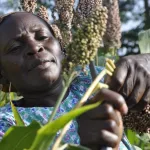

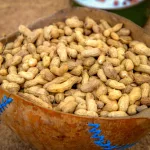
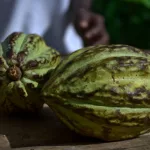
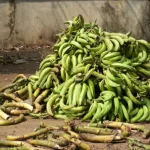
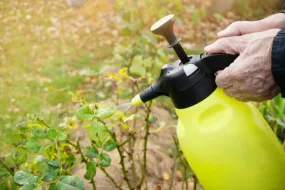
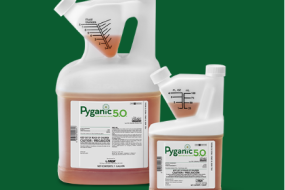
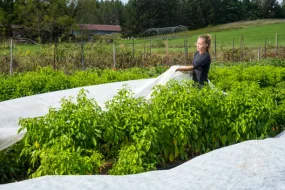
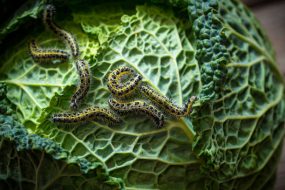
4 replies on “Discover the effective strategies and practices for sustainable pest control in agriculture.”
[…] irrigation can sometimes create a conducive environment for pests and weeds. Implement integrated pest management strategies and weed control measures to maintain crop […]
[…] 1. Integrated Pest Management (IPM) […]
[…] of the most significant contributions of beneficial insects is their role in pest control. They prey on crop-damaging pests like aphids, caterpillars, and mites, keeping their populations […]
[…] scouting for pests and diseases is essential. Use integrated pest management (IPM) techniques to minimize the use of chemical pesticides. Beneficial insects, companion planting, and […]